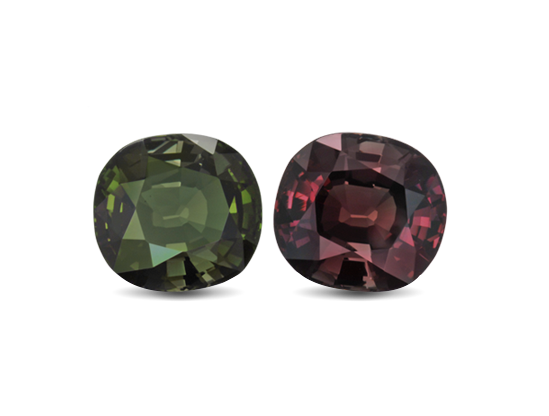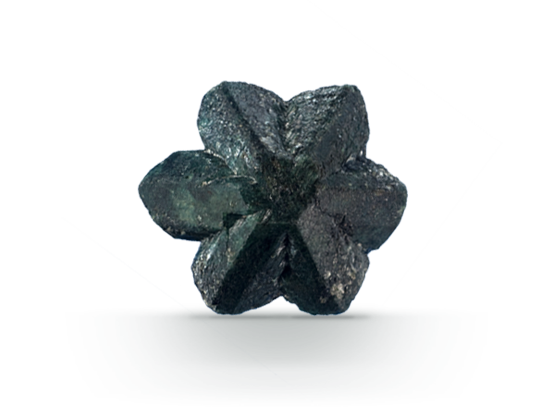Overview
About Alexandrite

Often described by gem aficionados as “emerald by day, ruby by night,” alexandrite is the very rare color-change variety of the mineral chrysoberyl. Originally discovered in Russia’s Ural Mountains in the 1830s, it’s now found in Sri Lanka, East Africa, and Brazil, but fine material is exceptionally rare and valuable.
Birthstones & Anniversaries
Alexandrite is a birthstone for June, along with pearl and moonstone. Alexandrite is also the gem for the 55th wedding anniversary.
1830
The year alexandrite was discovered in Russia’s Ural Mountains.
Czar Alexander II
Gem’s namesake who emancipated Russia’s serfs and was assassinated in 1881.
580nm
This absorption band allows alexandrite to shift from red to green when viewed under different light sources.
Facts
-
Mineral:
Chrysoberyl
-
Chemistry:
BeAl2O4
-
Color:
Bluish green in daylight, purplish red in incandescent light
-
Refractive Index:
1.746 to 1.755
-
Birefringence:
0.008 to 0.010
-
Specific Gravity:
3.73
- Mohs Hardness: 8.5
Treatments
There are a number of processes used to alter the color, apparent clarity, or improve the durability of gems.
Learn MoreSynthetics
Some gemstones have synthetic counterparts that have essentially the same chemical, physical, and optical properties, but are grown by man in a laboratory.
Learn MoreImitations
Any gem can be imitated—sometimes by manmade materials or by natural materials chosen by man to impersonate a particular gem.
Learn More
Why We Love This Gemstone
Color Change
Making alexandrite change color from green to red is the world’s most fun use of a penlight.
Light Source
This gem provides dramatic proof of how much the light source affects color in gems.
Phenomena
Alexandrite can show both color change and a cat’s-eye: two phenomena in one gem.
Quality Factors
Color

Fine alexandrite is green to bluish green in daylight and red to purplish red in incandescent light.
Clarity
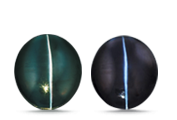
Good quality alexandrite has few inclusions. Rarely, needle-like inclusions create a cat’s-eye.
Cut
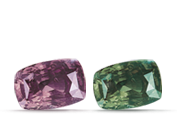
Alexandrite is most often available in mixed cuts. Its rarity means it is often cut to save weight.
Carat Weight
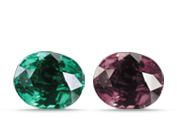
Most cut gems weigh less than one carat. Larger, higher-quality gems rise in price dramatically.
Alexandrite Quality Factors: The Comprehensive Guide
Research
Explore sources, gemological research, and the role of gems in history.
Cat’s-Eye Alexandrite with Unique Inclusion Pattern
Makoto Miura and Yusuke Katsurada , Jan 26, 2018 Read Article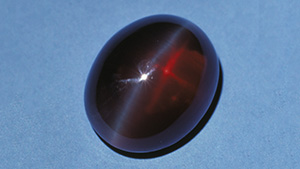
Titanium-Bearing Synthetic Alexandrite and Chrysoberyl
Jennifer Stone-Sundberg , Jan 31, 2014 Read Article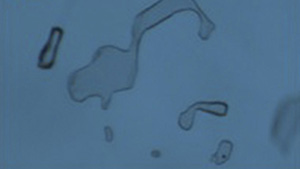
Challenges in Orienting Alexandrite: The Usambara and Other Optical Effects in Synthetic HOC-Grown Russian Alexandrite
Jennifer Stone-Sundberg , Apr 30, 2014 Read Article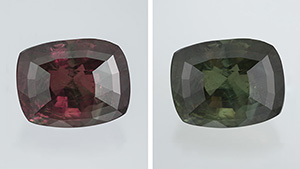
Fine Corundum, Paraíba Tourmaline, and Alexandrite – Tucson 2014
Duncan Pay , Apr 30, 2014 Read Article


